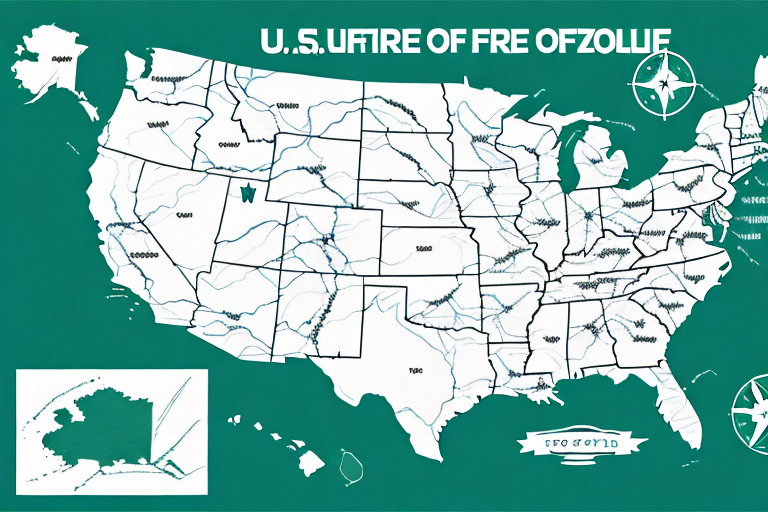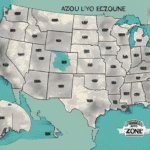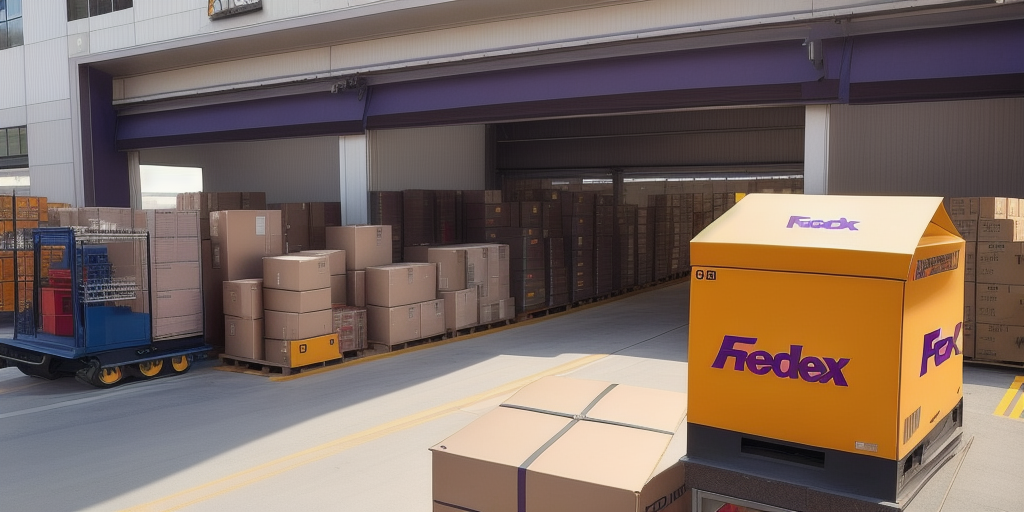Understanding the UPS Ground Zone Chart for the USA
The UPS Ground Zone Chart is an important tool that businesses and individuals can use to determine the cost of shipping items across the United States. This chart helps determine shipping costs based on the distance between the origin and destination of the shipment. In this article, we will provide a comprehensive guide on how the UPS Ground Zone Chart works, its benefits, how to read and interpret it, common mistakes to avoid, and much more.
How Does the UPS Ground Zone Chart Work?
The UPS Ground Zone Chart works by dividing the United States into different delivery zones based on the distance between the origin and destination. The zones are numbered from 2 to 8, with Zone 2 being the closest and Zone 8 being the farthest. The shipping cost of a package is calculated based on the weight and dimensions of the item, as well as the distance it will travel according to the Zone Chart. It is important to note that the UPS Ground Zone Chart is updated annually to reflect changes in delivery routes and transportation networks. This ensures that shipping costs are accurate and reflect the most efficient delivery routes.
Additionally, UPS offers a variety of services, such as guaranteed delivery times and package tracking, to provide customers with a reliable and convenient shipping experience. Customers can easily access the UPS Ground Zone Chart on the UPS website or by contacting customer service. By using the Zone Chart, customers can estimate shipping costs and delivery times for their packages, allowing them to make informed decisions about their shipping needs. Overall, the UPS Ground Zone Chart is a valuable tool for both businesses and individuals who need to ship packages across the United States.
Benefits of Using the UPS Ground Zone Chart for Shipping
Using the UPS Ground Zone Chart has several benefits for businesses and individuals:
- Enables accurate estimation of delivery costs, which is crucial for budgeting and planning.
- Helps avoid surprise charges due to distance or the weight and size of the package.
- Allows the choice of the most cost-effective shipping option, potentially saving money on shipping costs.
- Streamlines the shipping process and helps in making informed decisions about shipping needs.
How to Read and Interpret the UPS Ground Zone Chart
Reading and interpreting the UPS Ground Zone Chart requires an understanding of the distance between the origin and destination. This helps determine the shipping cost by locating where the two locations fall on the Zone Chart. Once the appropriate Zone is identified, the shipping cost can be determined using the corresponding pricing structure.
It is important to note that the UPS Ground Zone Chart is updated annually, so it is essential to use the most current version to ensure accurate pricing. Additionally, the Zone Chart only applies to packages shipped within the United States, as international shipping rates and zones may differ. It is recommended to consult with a UPS representative for any questions or concerns regarding shipping rates and zones.
Common Mistakes to Avoid When Using the UPS Ground Zone Chart
Some common mistakes to avoid when using the UPS Ground Zone Chart include:
- Failing to check the Zone Chart for each shipment, which can result in overpaying or underpaying for the delivery service.
- Ignoring the dimensions and weight of the package, leading to inaccurate pricing.
- Not accounting for potential discrepancies for remote or rural areas. In such cases, it's recommended to contact UPS directly to confirm delivery options and pricing.
How to Save Money by Using the UPS Ground Zone Chart Effectively
Using the UPS Ground Zone Chart effectively can help businesses and individuals save money on shipping costs. Some strategies include:
- Consolidating multiple shipments into one package to reduce the shipping cost per item.
- Negotiating lower rates with UPS by establishing a long-term relationship with the delivery company.
- Choosing the right shipping option, such as Ground, 2nd Day Air, or Next Day Air. Selecting the most appropriate option can save money while ensuring timely delivery.
Tips and Tricks for Optimizing Your Shipping Costs with the UPS Ground Zone Chart
Optimizing shipping costs with the UPS Ground Zone Chart requires careful planning and attention to detail:
- Package items efficiently to reduce the package’s weight and size.
- Use a shipping platform that integrates with UPS to get better rates, track shipments, and create shipping labels more efficiently.
- Consider the destination of your package and choose the most cost-effective shipping zone.
- Select the appropriate delivery option to balance cost and delivery time expectations.
Frequently Asked Questions About the UPS Ground Zone Chart
Here are some common questions that people ask about the UPS Ground Zone Chart:
- The UPS Ground Zone Chart is based on the distance between the origin and destination zip codes. Further distances will lead to higher zones and shipping costs.
- Use the UPS online shipping calculator to get an accurate estimate of shipping costs.
- UPS Ground service offers a money-back guarantee for packages that do not arrive on the scheduled delivery date, though this does not apply to delays caused by weather conditions or other uncontrollable circumstances.
Examples of Successful Businesses That Use the UPS Ground Zone Chart to Their Advantage
Many businesses have leveraged the benefits of the UPS Ground Zone Chart to reduce shipping costs and improve delivery times. For example, Amazon, the world’s largest online retailer, uses the UPS Ground service to deliver millions of packages across the United States. Other businesses that have benefited include small e-commerce businesses, manufacturers, and wholesalers.
Comparing the UPS Ground Zone Chart to Other Shipping Options Available in the USA
There are several shipping options available in the United States, including USPS, FedEx, and DHL. Compared to these options, the UPS Ground service offers competitive rates and reliable delivery times. It is also a popular choice for businesses that require frequent and large shipments across the country.
How Technology is Changing the Way We Use the UPS Ground Zone Chart
Advancements in technology are changing the way businesses and individuals use the UPS Ground Zone Chart. Significant innovations include:
- Shipping platforms and software that integrate with the Zone Chart to optimize shipping costs and improve delivery times.
- Real-time tracking of shipments.
- More efficient ways of creating and managing shipping labels.
Pros and Cons of Using the UPS Ground Zone Chart for Your Business
Using the UPS Ground Zone Chart has its advantages and disadvantages:
Pros:
- Accurate cost estimation.
- Reliable delivery times.
- Competitive pricing.
Cons:
- Possible distance discrepancies leading to over- or underpayment.
- Time-consuming to check the Zone Chart for every shipment.
How to Calculate Shipping Costs Using the UPS Ground Zone Chart
Calculating shipping costs using the UPS Ground Zone Chart requires knowing the dimensions and weight of the package and the distance between the origin and destination. To calculate the cost, locate both locations on the Zone Chart and use the corresponding pricing structure for the identified Zone.
Best Practices for Using the UPS Ground Zone Chart for Your Business
Some best practices for using the UPS Ground Zone Chart include:
- Regularly updating your Zone Chart to use the most current version.
- Consulting with UPS representatives for any questions or special circumstances.
- Accurately measuring and weighing your packages.
- Leveraging technology to manage and track your shipments efficiently.
The Future of Shipping and How It Relates to the UPS Ground Zone Chart
The future of shipping is moving towards more eco-friendly delivery methods and greater reliance on technology. UPS is exploring using electric vehicles and drones to deliver packages, which would reduce carbon emissions and improve delivery times. Additionally, technology such as machine learning and AI are being used to optimize delivery routes and provide personalized customer experiences. These advancements are likely to impact the use of the UPS Ground Zone Chart positively, making it easier and more efficient to estimate shipping costs and optimize delivery times.




















